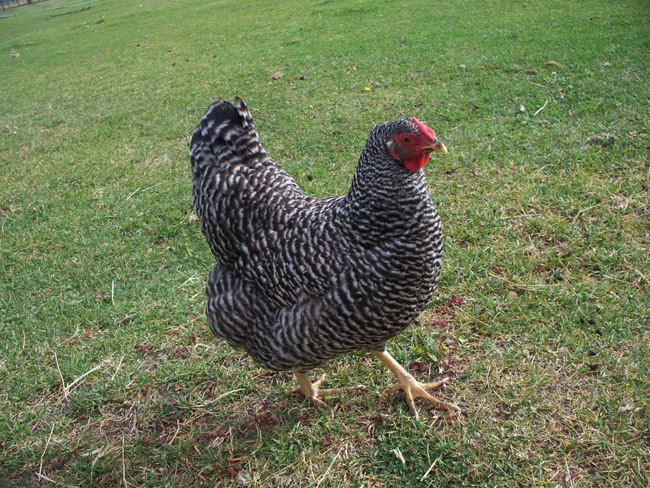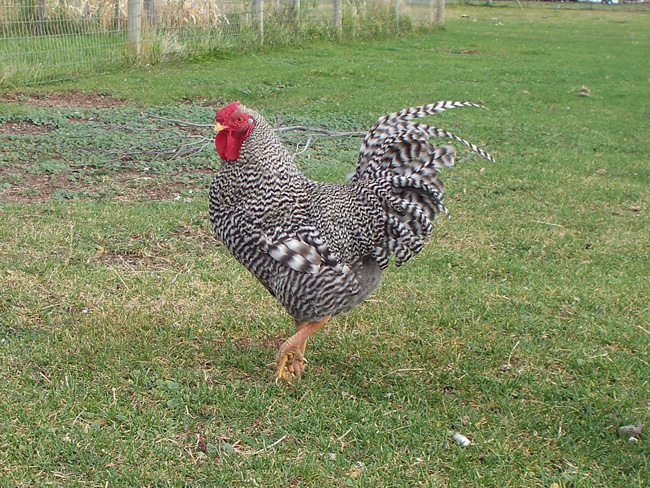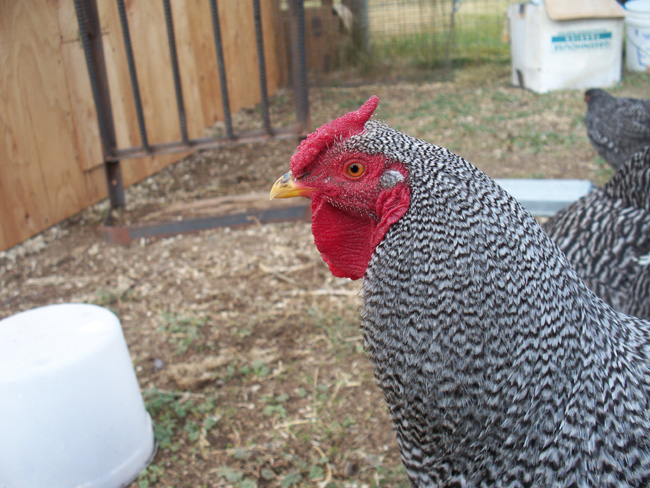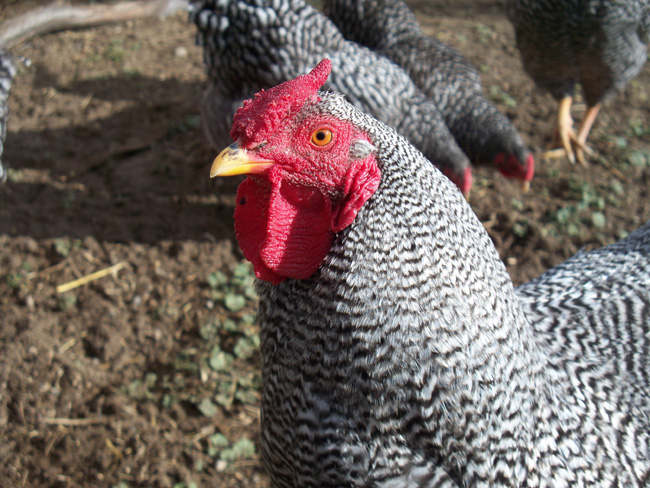So we are doing some culling in our flock and I thought I'd share our progress and process so far...
We've banded all the hens and pullets with zip ties. Only a couple of the ties have come off so far, and it seems to be working great. I can easily tell from a distance what pullet or hen I'm looking at because of the different color of ties.
First off, we are separating the hens and putting them one by one into what used to be a rabbit hutch (about 24x48) for the day until they lay an egg, then they go out. We are looking at the size, color and shell quality of the eggs and of course the rate at which they are laid. This is going into consideration with the adult laying hens as to who gets sold, stays or heads to the stew pot. It has really opened our eyes to see what hens are laying what eggs. Now I almost know what hen an egg came from just by the location and what the egg looks like, as well as the shell quality when candled. And it is great to know which are the most productive hens. There are a couple I'll be sad to see go, because they lay a big egg every day, but they do have some faults and need to find pet homes.
The best part is knowing that the three best hens are great layers. One is laying a nice large egg every day, and one even
laid two eggs today!!! I almost couldn't believe it, I thought I was mixing up her colors, but no - she was trapped in the hutch and laid an egg, then I put her out, and about an hour later there was a hen hopping into the nest box. I waited around to see who it was, and when she stood up it was Blue Yellow with a new egg in the box!
. I'm sure it's a rare day, but very cool anyway! One egg was her normal larger sized egg and one was a bit smaller, like a medium/large.
One of the hens that lays every single day (we've known for some time, as she always gets out and lays in the same spot in the barn - if you're out there at about 11am you'll find her on her nest) has a very pinched tail, so we're finding her a good laying home.
So the main issue we have with the oldest hens is fluffy butt and angles. The biggest issues with the pullets are combs and darkness. The pullets are also in a fugly stage so it's hard to tell if they have narrow tails or if their feathers are just growing faster than their bodies. We thought even Leroy had a narrow tail at this age, and he has one of the biggest tail spreads I've seen on a bird his size, so we're waiting on them before passing tail judgement.
I'm walking out every day and just hanging out with the chickens and noting observations about each pullet and hen. I then go inside and type these up, so I have a list for each bird about the observations I've made. I don't write about each bird every day, since many of the pullets and cockerels are off in some wild place most of the day, but it's getting easier to tell which ones we'll definitely cull! The night we banded them we made some notes as well. Since they were trying to sleep, it was impossible to really judge their tails or angles, so we noted mostly combs and coloring. During the day I just look at angles and tails on the females, as we feel these would be the first steps towards higher quality hens.
Here is a sample of a few of the hen and pullet's notes from the last couple of days...
Green/Blue - CULL, laying home
09-26-10 | Is a probable cull. Gets out every day, very narrow tail, lays every day!
09-27-10 | Very narrow tail lays eggs behind Styrofoam.
09-28-10 | Another egg today, of course. Medium sized nice eggs, 7 eggs/week layer.
Green/None
09-26-10 | Very nice hen, great coloring, less fluffy butt than her sisters.
09-27-10 | She laid an egg in the nest box, what a good hen!
09-28-10 | Was in nest box, disturbed her so she didnt lay an egg.
Green/Yellow
09-26-10 | She has a very meaty comb, rather dark, and a black beak.
09-27-10 | Upright, somewhat narrow tail, good angles. Dark.
09-28-10 | Nice hen, nice tail, upright, might be slightly narrow in the tail but not too bad.
Orange/Green
09-26-10 | She has a slightly narrow tail, decent comb w/ spike but kind of meaty comb.
09-27-10 | She has a rather flat back and narrow tail, probable cull.
They're just kind of observations, nothing really too damning or saving, but we hope that these will help us both a) learn how to recognize faults early on (as we will look back on these notes when the pullets are mature) and b) directly associate conformation faults with laying faults.
As far as males and correcting the female faults...
Our plan is to in the spring cross the oldest rooster (with excellent coloring) onto the darkest hens [pen1], but with the best angles. We think this pen will yield the best birds, as that rooster is also very nice. We are going to use Leroy on the hens with slightly more narrow tails, as he has an incredible tail spread and we hope that we can increase the spread on the mediocre hens [pen 2].
There is one cockerel we'll keep, we think. We think he's going to be beautiful as an adult, with great angles and has the best comb of the young birds. We plan to cross him with the hens that could have their angles improved [pen 3].
Once Leroy is done putting a better tail on some pullets, we'll send him to a pet home. He doesn't have the upright carriage that we really want to see, but that tail is just impressive and we're seeing a lot of photos of Dominiques with narrow tails, so we really want to keep the tails good in our flock.
Anyone else want to share their breeding notes/practices?














